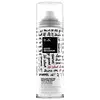What's inside
What's inside
 Benefits
Benefits

 Concerns
Concerns

 Ingredients Side-by-side
Ingredients Side-by-side

Water
Skin ConditioningGlycerin
HumectantDimethicone
EmollientCetyl Alcohol
EmollientGlyceryl Stearate
EmollientPEG-100 Stearate
Hydroxyethylcellulose
Emulsion StabilisingPhenoxyethanol
PreservativeBis-Diisopropanolamino-Pg-Propyl Dimethicone/Bis-Isobutyl PEG-14 Copolymer
Parfum
MaskingEthylhexylglycerin
Skin ConditioningPolysorbate 20
EmulsifyingButyloctanol
HumectantBenzyl Benzoate
AntimicrobialCamellia Oleifera Seed Oil
Skin ConditioningDisodium Phosphate
BufferingPolysorbate 60
EmulsifyingHexyl Cinnamal
PerfumingMethyl 2-Octynoate
PerfumingLimonene
PerfumingLinalool
PerfumingSodium Phosphate
BufferingHydrolyzed Plukenetia Volubilis Seed Extract
Emulsion StabilisingWater, Glycerin, Dimethicone, Cetyl Alcohol, Glyceryl Stearate, PEG-100 Stearate, Hydroxyethylcellulose, Phenoxyethanol, Bis-Diisopropanolamino-Pg-Propyl Dimethicone/Bis-Isobutyl PEG-14 Copolymer, Parfum, Ethylhexylglycerin, Polysorbate 20, Butyloctanol, Benzyl Benzoate, Camellia Oleifera Seed Oil, Disodium Phosphate, Polysorbate 60, Hexyl Cinnamal, Methyl 2-Octynoate, Limonene, Linalool, Sodium Phosphate, Hydrolyzed Plukenetia Volubilis Seed Extract
Alcohol Denat.
AntimicrobialHydrofluorocarbon 152a
Butyl Ester Of Pvm/Ma Copolymer
PEG/PPG-17/18 Dimethicone
EmulsifyingWater
Skin ConditioningVanillin
MaskingC12-15 Alkyl Benzoate
AntimicrobialAminomethyl Propanol
BufferingHydrolyzed Corn Protein
Skin ConditioningHydrolyzed Soy Protein
HumectantHydrolyzed Wheat Protein
Skin ConditioningSilicone Quaternium-16
Skin ConditioningUndeceth-11
EmollientPEG/PPG-18/18 Dimethicone
EmulsifyingGlycerin
HumectantCinnamidopropyltrimonium Chloride
Butyloctanol
HumectantUndeceth-5
EmulsifyingButylene Glycol
HumectantSpirulina Maxima Extract
SmoothingArctium Lappa Root Extract
Skin ConditioningParfum
MaskingAlpha-Isomethyl Ionone
PerfumingAlcohol Denat., Hydrofluorocarbon 152a, Butyl Ester Of Pvm/Ma Copolymer, PEG/PPG-17/18 Dimethicone, Water, Vanillin, C12-15 Alkyl Benzoate, Aminomethyl Propanol, Hydrolyzed Corn Protein, Hydrolyzed Soy Protein, Hydrolyzed Wheat Protein, Silicone Quaternium-16, Undeceth-11, PEG/PPG-18/18 Dimethicone, Glycerin, Cinnamidopropyltrimonium Chloride, Butyloctanol, Undeceth-5, Butylene Glycol, Spirulina Maxima Extract, Arctium Lappa Root Extract, Parfum, Alpha-Isomethyl Ionone
 Reviews
Reviews

Ingredients Explained
These ingredients are found in both products.
Ingredients higher up in an ingredient list are typically present in a larger amount.
We don't have a description for Butyloctanol yet.
Glycerin is already naturally found in your skin. It helps moisturize and protect your skin.
A study from 2016 found glycerin to be more effective as a humectant than AHAs and hyaluronic acid.
As a humectant, it helps the skin stay hydrated by pulling moisture to your skin. The low molecular weight of glycerin allows it to pull moisture into the deeper layers of your skin.
Hydrated skin improves your skin barrier; Your skin barrier helps protect against irritants and bacteria.
Glycerin has also been found to have antimicrobial and antiviral properties. Due to these properties, glycerin is often used in wound and burn treatments.
In cosmetics, glycerin is usually derived from plants such as soybean or palm. However, it can also be sourced from animals, such as tallow or animal fat.
This ingredient is organic, colorless, odorless, and non-toxic.
Glycerin is the name for this ingredient in American English. British English uses Glycerol/Glycerine.
Learn more about GlycerinParfum is a catch-all term for an ingredient or more that is used to give a scent to products.
Also called "fragrance", this ingredient can be a blend of hundreds of chemicals or plant oils. This means every product with "fragrance" or "parfum" in the ingredients list is a different mixture.
For instance, Habanolide is a proprietary trade name for a specific aroma chemical. When used as a fragrance ingredient in cosmetics, most aroma chemicals fall under the broad labeling category of “FRAGRANCE” or “PARFUM” according to EU and US regulations.
The term 'parfum' or 'fragrance' is not regulated in many countries. In many cases, it is up to the brand to define this term.
For instance, many brands choose to label themselves as "fragrance-free" because they are not using synthetic fragrances. However, their products may still contain ingredients such as essential oils that are considered a fragrance by INCI standards.
One example is Calendula flower extract. Calendula is an essential oil that still imparts a scent or 'fragrance'.
Depending on the blend, the ingredients in the mixture can cause allergies and sensitivities on the skin. Some ingredients that are known EU allergens include linalool and citronellol.
Parfum can also be used to mask or cover an unpleasant scent.
The bottom line is: not all fragrances/parfum/ingredients are created equally. If you are worried about fragrances, we recommend taking a closer look at an ingredient. And of course, we always recommend speaking with a professional.
Learn more about ParfumWater. It's the most common cosmetic ingredient of all. You'll usually see it at the top of ingredient lists, meaning that it makes up the largest part of the product.
So why is it so popular? Water most often acts as a solvent - this means that it helps dissolve other ingredients into the formulation.
You'll also recognize water as that liquid we all need to stay alive. If you see this, drink a glass of water. Stay hydrated!
Learn more about Water